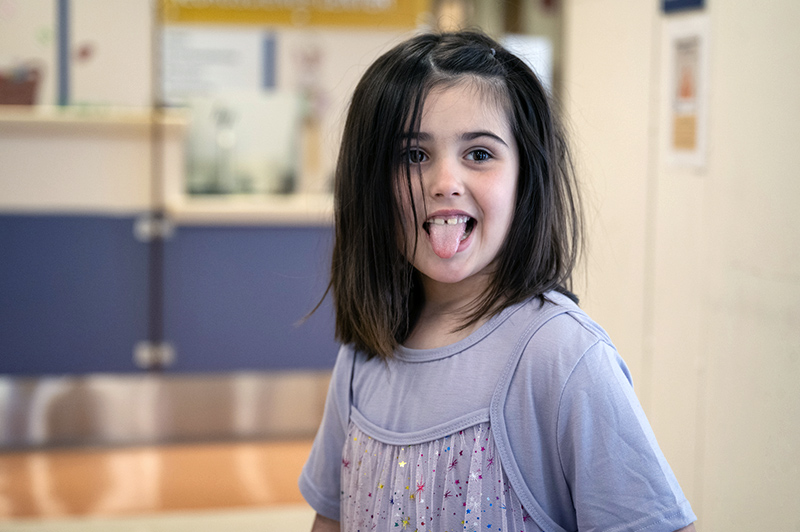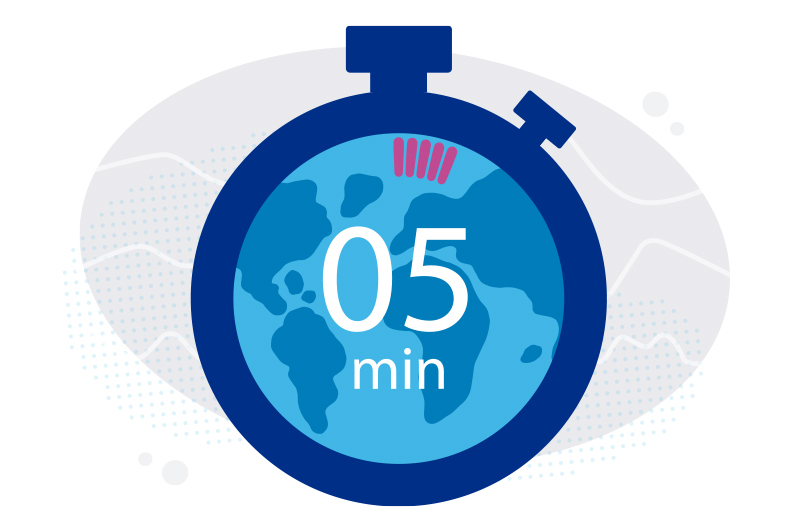Breadcrumb
- Home
- Conditions & Treatments
- Epilepsy
What is epilepsy?
Epilepsy, or “epilepsy spectrum disorder,” is a complex condition that makes a person prone to seizures. Seizures occur due to abnormal electrical activity in the brain when certain parts become over-excited and send out too many electrical signals.
Epilepsy appears most often in infants, children, and seniors. Approximately 1 percent of children are affected by epilepsy. In infants and young children, there are special considerations about why seizures occur, how seizures appear, and their impact on a child’s growth. Certain seizure types, such as infantile spasms, begin during this time.
There are two main types of epilepsy:
- Focal onset: Seizures originate in a specific area on one side of the brain. The seizure activity may stay in one area or spread to other parts of the brain. Focal onset seizures can be categorized as focal aware seizures (previously called simple partial seizures), where a person remains conscious during the seizure, or focal impaired awareness seizures (previously called complex partial seizures), where a person experiences a loss of awareness during the seizure.
- Generalized epilepsy: This type of epilepsy involves seizures that involve both sides of the brain. Generalized seizures can be classified into various types, including absence seizures (formerly known as petit mal seizures), tonic-clonic seizures (formerly known as grand mal seizures), atonic seizures, myoclonic seizures, and tonic seizures.
Lennox-Gastaut syndrome, a severe type of childhood-onset epilepsy, is known for generalized tonic seizures, distinctive EEG patterns that show slow spike-and-wave activity, and cognitive impairment.
While epilepsy can be caused by genetics, an underlying disease, injury, or brain development disorder, it often appears without an obvious cause. If a child experiences two or more unprovoked seizures, meaning no immediate such as a high fever, they may have epilepsy.
Epilepsy can involve different types of seizures. Some seizures are easily identifiable, characterized by shaking of the body and temporary loss of awareness. However, other seizures may not have any obvious outward signs.
Epilepsy can also lead to changes in a child’s behavior and personality, as well as other neurological concerns, learning difficulties, anxiety, and depression. Identifying these problems early and timely intervention is crucial for caring for a child with epilepsy.

“Princess June” reigns supreme over Rasmussen syndrome
What do you call a “girly” 5-year-old who adores dolls and frilly nightgowns? If you’re one of June Pelletier’s nurses at Boston Children’s Hospital, the answer is “Princess June,” of course. …

Status epilepticus: What’s changed, what to know, and a global perspective
Status epilepticus, or a prolonged seizure lasting more than five minutes, is a rare complication of epilepsy and a medical emergency that can occur even in people without a diagnosis of epilepsy. If…

For Fiadh: Pushing the envelope to treat drug-resistant epilepsy
Fiadh is a bubbly and empathetic 4-year-old. And if you ask her parents, Elaine and Dario, she’s also mischievous and wild. “She knows when she shouldn’t be doing something,” Elaine says. “Then…
Symptoms & Causes
What are the symptoms of epilepsy in children?
Because the brain controls all aspects of the body, epilepsy can have different effects on a child depending on where in the brain seizures occur. Seizures can be subtle and barely noticeable or frightening to witness.
Signs and symptoms of a seizure can include:
- Staring
- Tremors, convulsions, or jerking movements in the arms and legs
- Stiffening of the body
- Loss of consciousness
- Breathing problems
- Loss of bowel or bladder control
- Falling suddenly for no apparent reason
- Not responding to noise or words for short periods of time
- Appearing confused or in a haze
- Extreme sleepiness and irritability when waking up in the morning
- Head nodding or dropping
- Periods of rapid eye blinking
- Changes in vision and speech
- Vomiting
Epilepsy can have a profound effect on a child’s life. Some children may fall or get injured during a seizure, and the episode can leave your child exhausted. The abnormal brain activity that happens during a seizure can damage the brain, which is a special concern in children because their brains are still growing and changing.
What causes seizures?
A seizure happens when cells in the brain fire or “talk” too much, temporarily disrupting the brain’s normal electrical signals.
Seizures have many possible causes, including:
- Head injuries
- Birth trauma
- Congenital conditions (conditions that your child is born with) such as brain development disorders
- Brain tumors
- Genetic conditions
- Stroke
- Metabolic problems
In more than half of children who experience seizures, however, a cause cannot be found.
Diagnosis & Treatments
How is epilepsy diagnosed?
Many conditions, such as stroke, fainting, heartbeat concern, or breath-holding spells, can cause symptoms that look like epilepsy. If you think your child has epilepsy, a neurologist will review your child’s medical history, complete a physical exam, and may order testing, most likely an electroencephalogram (EEG). EEGs measure electrical activity in the brain. At the Epilepsy Center at Boston Children’s Hospital, we use high-definition EEG, which allows our clinicians to get a more detailed picture of your child’s brain activity.
A neurologist may also refer your child for other testing, such as:
- MRI, PET, SPECT, or other brain imaging
- MEG (magnetoencephalography)
- TMS (transcranial magnetic stimulation)
These tests help neurologists diagnose which type of epilepsy your child has — focal onset epilepsy or generalized epilepsy.
While diagnosing epilepsy, clinicians will also watch for related problems, such as learning or behavior difficulties or depression. Neuropsychologists can conduct specialized testing to monitor your child’s cognitive abilities, learning, behavior, emotional well-being, and social function. This will help in developing strategies and enhance your child’s daily functioning.
How do we treat epilepsy?
Because epilepsy and epilepsy spectrum disorder are complex conditions and affect each child differently, there is no one treatment that works for every child. Common therapeutic approaches include medication, surgery, and dietary changes.
Epilepsy medication
Medication remains the first line of treatment for epilepsy. There are many types of medications to treat seizures, and doctors can individualize medical treatment to help control your child’s specific type of seizures.
Medication options include:
- Chronotherapy: This approach involves carefully timing treatment to when seizures most often happen. It can often help medications work more effectively to control seizures.
- Genetically tailored treatments: The Boston Children’s Epilepsy Genetics Program uses DNA sequencing to discover previously unknown genetic causes of seizures, some of which disrupt brain biochemistry in a way that can be targeted with drugs.
- Pharmacogenomics: Genetic differences in metabolism can affect children’s responses to medications. By studying how an individual’s genetic makeup influences their response to medications, doctors choose the best treatment for each patient.
Diet therapy
Diet therapy can be an option for childhood epilepsy when medications don’t control seizures or cause intolerable side effects. It can be especially helpful for certain types of epilepsy, such as myoclonic-astatic epilepsy (Doose syndrome).
Several different diets can be used to treat epilepsy, including:
- Classic ketogenic diet
- Modified Atkins diet
- Medium chain triglyceride diet (MCTD)
- Low glycemic index treatment diet
The best diet for your child will depend on their epilepsy diagnosis, age, eating habits, and your family’s needs and preferences. It’s sometimes helpful to transition between the different diets.
Diet therapy takes a strong commitment, but it may offer some children better seizure control than medication. Because there isn’t yet an exact way to tell exactly how a child will respond to diet therapy, a three- to four-month trial is usually recommended.
The ketogenic diet
For about 30 percent of children with epilepsy, a ketogenic diet has been shown to be effective in providing seizure control when drugs fail.
In its strictest form, the ketogenic diet provides more than 90 percent of its calories through fat (compared to the 25 to 40 percent usually recommended for children). When the body burns fat for energy rather than glucose from carbohydrates, it produces compounds known as ketones. The increase in ketones is called ketosis. Experts believe ketosis reduces seizure activity in the brain, although exactly how this works is still unknown.
The ketogenic diet is highly precise and restrictive. Because it can cause side effects, such as excess acid (acidosis), vomiting, nutritional deficiencies, and kidney stones, it should only be carried out under medical supervision. Before starting a ketogenic diet, clinicians from our Ketogenic Diet Program will assess your child’s nutritional status, diet preferences, and calorie needs. If a ketogenic diet seems feasible for your family, our team will customize it for your child to achieve the best seizure control while meeting their daily energy and nutrient needs. Special ketogenic formulas are also available for infants or children who need to be fed through a feeding tube.
Because ketogenic diets are not nutritionally balanced, children will need to take vitamin and mineral supplements. Clinicians will also need to check your child’s ketone levels periodically and may need to change the diet to maintain ketosis.
Children usually stay on a ketogenic diet for about two years, but some stay on longer, and the ketogenic diet is being used increasingly in adults. Some children may need to start the diet while in the hospital, but many can initiate the diet in the outpatient setting.
Though the ketogenic diet is challenging, a growing interest in the diet has increased the availability of “keto-friendly” products such as coconut oil, low-carbohydrate noodles, sugar-free syrups and flavorings, nut flours, and more.
Neuromodulation
The Epilepsy Center uses various forms of noninvasive neuromodulation to assist with epilepsy diagnosis and treatment as alternatives to epilepsy surgery that involves resection or laser-mediated ablation of brain tissue.
- Transcranial magnetic stimulation (TMS) uses a strong magnet on a child’s head to create changing magnetic fields. These fields produce tiny electric currents in the brain, which lower brain activity. TMS is actively used at Boston Children’s to map motor and speech cortical areas before brain surgery.
- Cortical brain mapping is a noninvasive technique to map cortical functions such as movements and speech using passive mapping of specific EEG frequencies, known as gamma activity, to help with mapping eloquent brain functions before epilepsy surgery.
- Responsive nerve stimulation involves a cortically implanted device that provides closed loop, or responsive, electrical stimulation in response to a recorded EEG signal to stop the seizure event.
- Deep brain stimulation involves a thalamic implanted device that provides open loop, or regular, electrical stimulation to reduce seizures.
- Vagus nerve stimulation involves an implanted device under the chest wall that stimulates the vagus nerve in the neck. This provides a regular electrical signal to the brain. There is also an accompanying magnet that allows for giving extra impulses as needed and a sensor to detect changes in heart rate that may signify an active seizure and lead to an extra impulse.
Surgery
When seizures don’t respond to medication or other treatments, your child’s doctor may recommend an evaluation to see if surgery is an option. Surgical evaluations are done in the hospital over five to seven days. During this time, clinicians will study your child’s seizures and learn exactly what area of the brain they are coming from. If surgery is an option, your child’s care team will discuss what type of surgery they recommend.
These may include:
- Focal resection: If your child’s care team can pinpoint the specific area of your child’s brain that is over-firing and causing the seizures (a “focal point”), your child may be able to have surgery to remove the abnormal brain tissue without harming neighboring brain areas. This procedure, called “resective” surgery, can often stop the seizures entirely, allowing most children to function normally afterward.
- Laser ablation: Laser interstitial thermal therapy (LITT) is a minimally invasive approach to heating/ablating the seizure focus. LITT requires precise mapping of the seizure focus, typically done utilizing stereo EEG (sEEG) intracranial monitoring, and allows our epilepsy surgery team to assess the optimal surgical option for each patient. sEEG and LITT are especially well suited for deep seizure foci in the brain not readily accessible by other methods.
- Corpus callosotomy: Corpus callosotomy involves cutting the major fibers that connect the two halves (hemispheres) of the brain. This can prevent seizures from spreading from one side of your child’s brain to the other by cutting off communication between the two hemispheres. Corpus callosotomy is particularly effective for children who experience severe “drop attacks” in which they lose consciousness. While seizures won’t usually go away, in most cases, they become milder and less disabling.
- Hemispherectomy: A hemispherectomy involves removing or disabling one half (hemisphere) of the brain. This procedure may be used if seizures are coming from a broad area of a single hemisphere. When used appropriately, hemispherectomy can be extremely rewarding but is only recommended for very severe epilepsy that hasn’t responded to medication and less aggressive surgeries. Hemispherectomy can cause serious side effects, including motor and language skill loss, which must be weighed against the severity of the epilepsy symptoms themselves.
At Boston Children’s, we have a multidisciplinary team of epileptologists, epilepsy surgeons, neuroradiologists, neuropsychologists, nurses, and social workers that meets regularly and discusses each case individually to weigh the best options, which are then decided in collaboration with you and your family.
How we care for epilepsy
The Epilepsy Center at Boston Children’s Hospital was the world’s first comprehensive pediatric epilepsy center, and today, we’re at the forefront of testing, evaluation, treatment, and counseling for epilepsy and seizures in children.
Research & Innovation
Our areas of innovation
The Epilepsy Center has long been a pioneer in testing, diagnosing, and treating children of all ages and abilities who have epilepsy and seizures. In 1944, Dr. William Lennox established the nation’s first "Seizure Unit" at Boston Children's Hospital, focusing on a comprehensive approach to epilepsy care and advocating for epilepsy-related scientific progress and individuals with epilepsy.
Today, we are a leader in neuromodulation, a treatment to adjust brain or nervous system activity using electrical or magnetic stimulation. We have extensive expertise in two cutting-edge neuromodulation techniques: Responsive Neurostimulation (RNS) and Deep Brain Stimulation (DBS). RNS involves a small, implanted device that monitors brain activity and delivers targeted electrical stimulation to prevent seizures in patients with epilepsy. DBS involves implanting electrodes deep in the brain to regulate neural activity and alleviate symptoms of epilepsy, movement disorders, and other conditions.
Clinical trials
There has been a tremendous increase in options for treating epilepsy, from new medications to diets, surgeries, and devices. New approaches are in progress, and your neurologist may recommend research enrollment options, such as gene sequencing studies to targeted therapies.





